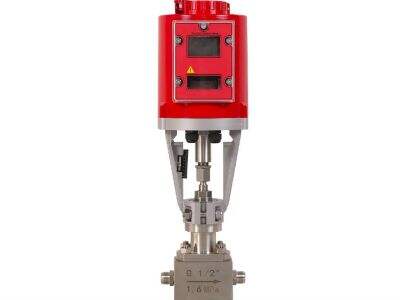Electric actuators cover a range of applicationsbut their use with gate valves is few of its most important tools. They are used to regulate the flow of fluids in various sectors. Simply installing an electric actuator for gate valve may look like a simple process but it requires a systematic effort that ensures the device genuinely works when it needs to. That leads us to the E-ACTUATOR-GATE VALVE - a full guide that talks about the electric actuators for Gate control valve, tips to be followed during installation, mistakes to avoid, and what it takes to keep them working smoothly.
Electric Actuators for Gate Valves: What Are They?
So, before we move ahead with the installation part, we must understand what electric actuators are? These are used to open/close gate valves by converting electrical energy into motion. This action opens and closes the gate in the valve which permits a liquid like water, gas, or oil to pass through.
General electric actuator installation tips
Correct installation of electric actuators and its much required for its smooth operation. Here are some tips to help with your install:
Compatibility Check — The electric actuator must be sized to (and strong enough for) the gate valve.
Follow Instructions: Read the manufacturer’s instructions carefully. They provide critical steps for mounting, wiring, and setting up the actuator.
Steps To Follow After Mounting An ActuatorSecure actuator:
Wire Inspection: Inspect all wiring connections to ensure they are securely connected and properly configured to avoid issues.
Common Mistakes to Avoid
When installing electric actuators, there are various things you need to get right, to ensure you don't run into any issues. Here are some errors to avoid:
Not Opening or Closing: If the actuator is not calibrated correctly, it may fail to open or close the valve.
Loosening Too Much: If you loosen the screws too much, it can result in damage to the actuator or valve and lead to leaks.
Neglecting Wiring Safety Not considering wiring safety can cause electric shocks or short circuits that may damage the actuator.
Advice for Smooth Operation
And to maintain the reliability of electric actuators, a few hints:
Recurrent Checking: Regularly check and maintain the actuator. This involves lubricating moving parts and inspecting the wires.
Track performance: Look for indicators of how the actuator is performing, including speed or output force, to detect any anomaly.
Seek Help: If there are issues, seek help from a professional technician to minimize further damage.
Benefit from Electric Actuator Installation
With the right approach, the following series of mistakes to avoid, and commercial recommendations, you can ensure an electric actuator works as intended. Install them with safety and careful work because running smoothly for a long period is the key.
As a final note, keeping to the basics and best practices can help you install electric actuators easier and more efficiently. Your gate valve electric actuators will run smoothly, if you understand how they work, follow expert advice, and be aware of common mistakes. Please let us know if you need more help to install!
 EN
EN
 AR
AR
 CS
CS
 FR
FR
 HI
HI
 KO
KO
 PL
PL
 PT
PT
 RO
RO
 RU
RU
 ES
ES
 TL
TL
 IW
IW
 ID
ID
 LT
LT
 SR
SR
 SL
SL
 UK
UK
 VI
VI
 ET
ET
 HU
HU
 TH
TH
 TR
TR
 FA
FA
 MS
MS
 UR
UR
 BN
BN
 JW
JW
 MN
MN
 NE
NE
 TA
TA
 MY
MY
 KK
KK
 UZ
UZ
 KY
KY



